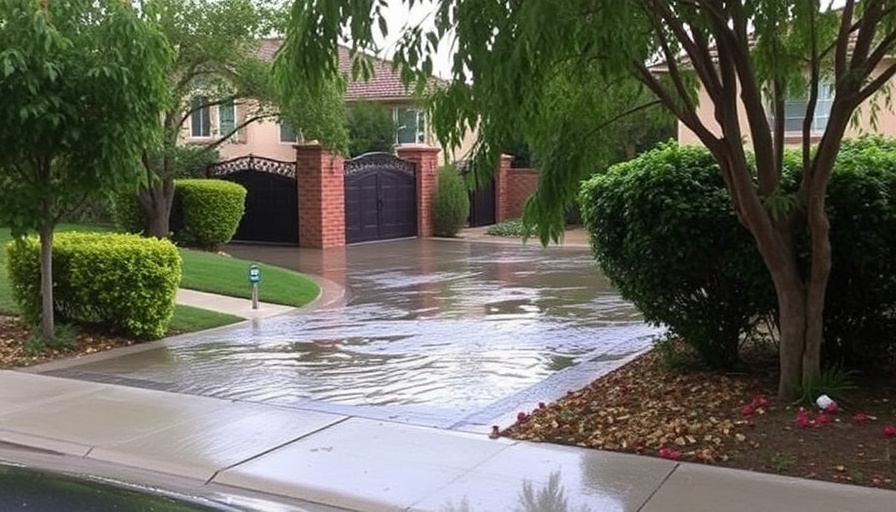
The Unexpected Flooding in Granada Hills: A Community Disrupted
On a seemingly normal Saturday in Granada Hills, residents were taken aback by a dramatic water main break that turned streets into temporary rivers. This incident not only caused significant flooding but also posed serious risks for nearby homes, including one family's yard where hundreds of gallons surged through unexpectedly.
As reported by local sources, the Los Angeles Department of Water and Power (LADWP) is currently grappling with the aftermath of this disruption, which comes on the heels of another water outage affecting over 31,000 people due to a damaged valve at a nearby pump station. The scenario raises larger concerns: not only were residents caught off guard by this sudden deluge, but the situation complicates recovery efforts already in place for many who are without water service.
Personal Accounts and Community Impact
Residents like Lucy Nazarian experienced firsthand the chaos wrought by the break. Lucy recounted her shock upon discovering the mess in her yard, describing the flooding as being akin to a scene from a movie—a scene she certainly never expected to play out in her home. "I've never seen something like that. It's scary," she shared, emphasizing how fortunate it was that her grandchildren were not there at the time.
The flooding comes as part of a broader context of local infrastructure challenges that plague communities across Southern California. These issues, often unseen until disaster strikes, underline the importance of investing in robust water systems that are better prepared for fluctuations and failures.
Understanding the Causes: Why Did the Break Occur?
According to LADWP, a sudden pressure spike at a temporary connection caused the main to rupture. Such incidents are not entirely uncommon in older infrastructure systems, especially as they face the strains of increased demand and climate-related stresses. This recent break has underscored the vulnerabilities many neighborhoods face due to aging pipelines, which were laid during a time when the city was less populated and environmental conditions markedly different.
Looking Ahead: What Can the Community Expect?
The expectation is that repairs will begin promptly, with crews working diligently to assess the damage as swiftly as possible. However, with the temporary shutdown of service ultimately leading to reduced water pressure for many in the area, locals are faced with a weekend without reliable water access. This can significantly impact everyday life—the use of water for basic needs like drinking and hygiene becomes suddenly precarious.
As residents navigate these challenges, they may feel the strain of ongoing water service issues that reflect a larger trend across California. Awareness and adaptive strategies—like storing water and utilizing water-saving practices—will be crucial in the coming days.
Community Resilience and the Importance of Preparedness
In times like these, stories of resilience shine through. Community members often come together to support one another, checking in on the elderly or those without transport options to ensure that everyone remains safe and has access to necessary resources.
City officials urge residents to remain vigilant during this period, emphasizing that an informed community is a prepared community. As many locals depend on evolving city infrastructure, understanding how to respond to such emergencies is vital.
Concluding Thoughts: Staying Connected and Informed
Water issues can seem distant until they affect us directly, but they highlight crucial infrastructure challenges. The importance of community engagement and being proactive will help foster resilience against future incidents. Residents are encouraged to stay informed through local news and community updates that address the ongoing situation.
For more updates on community safety and local news, residents are encouraged to connect with city officials and fellow neighbors during this challenging time.
 Add Row
Add Row  Add
Add 



Write A Comment